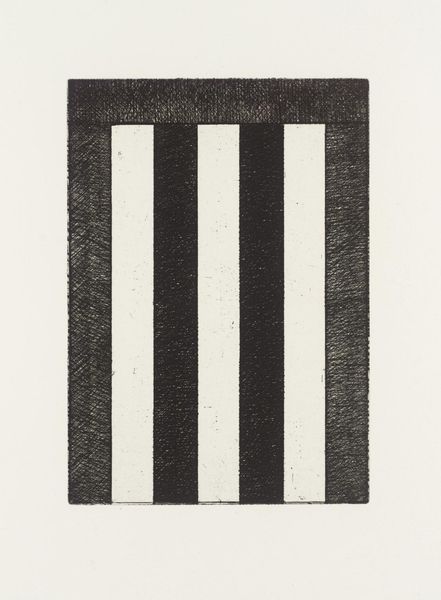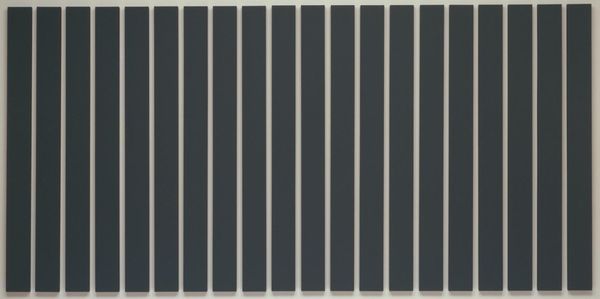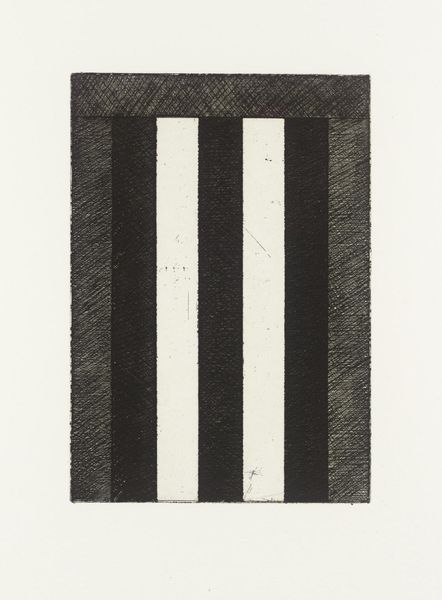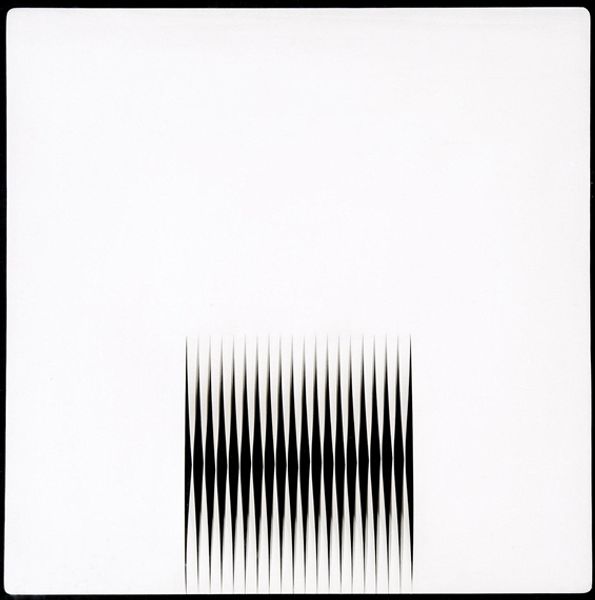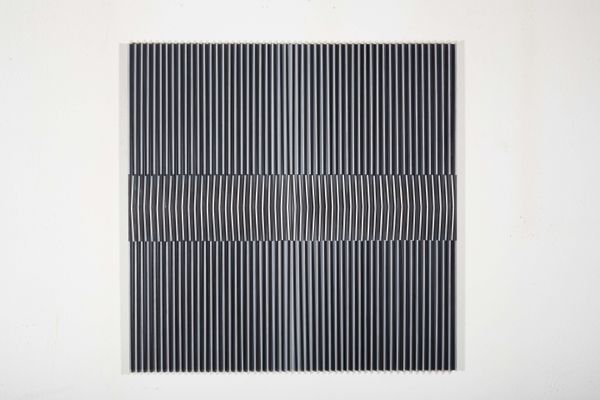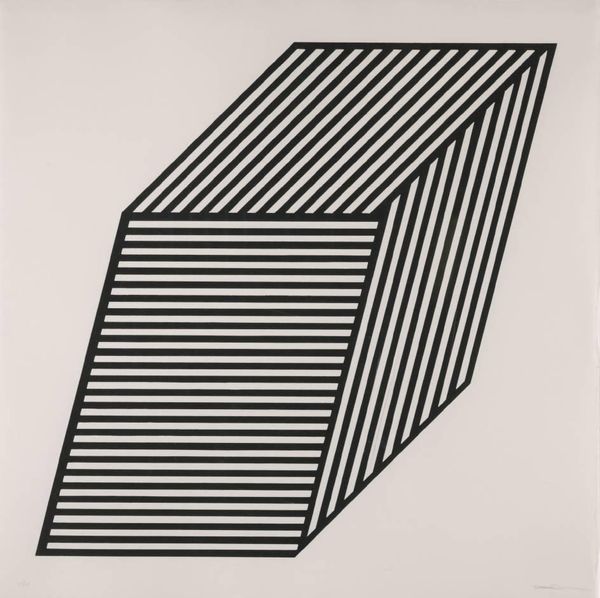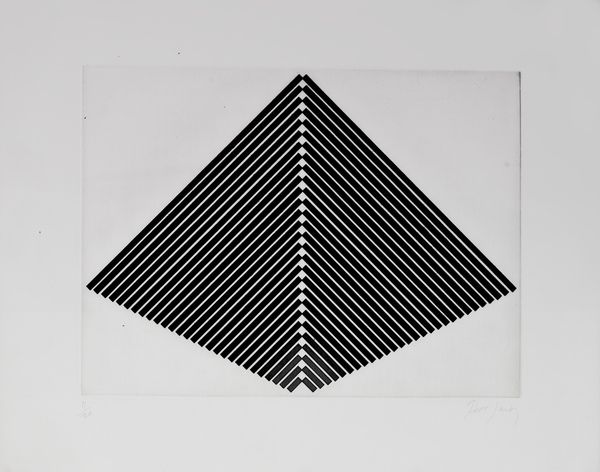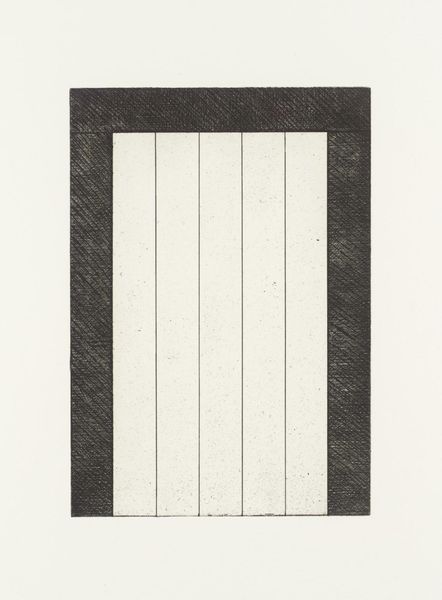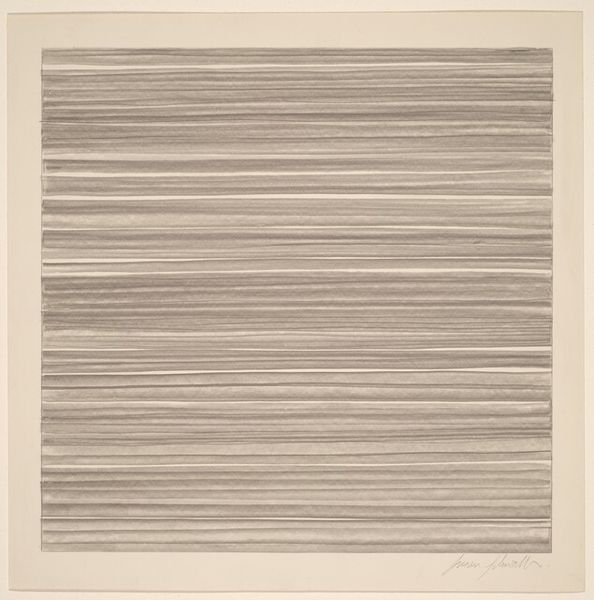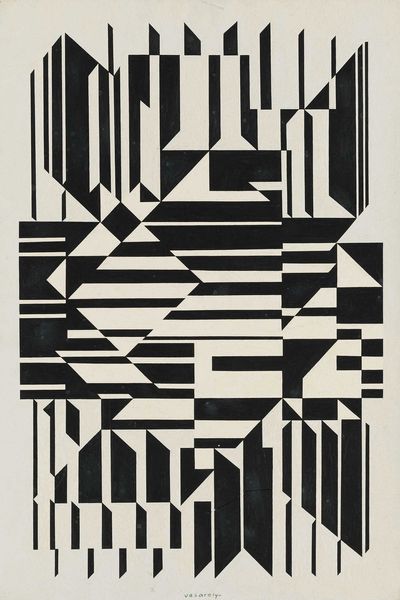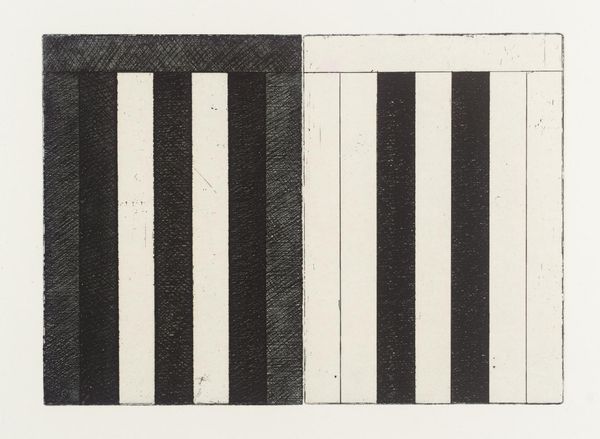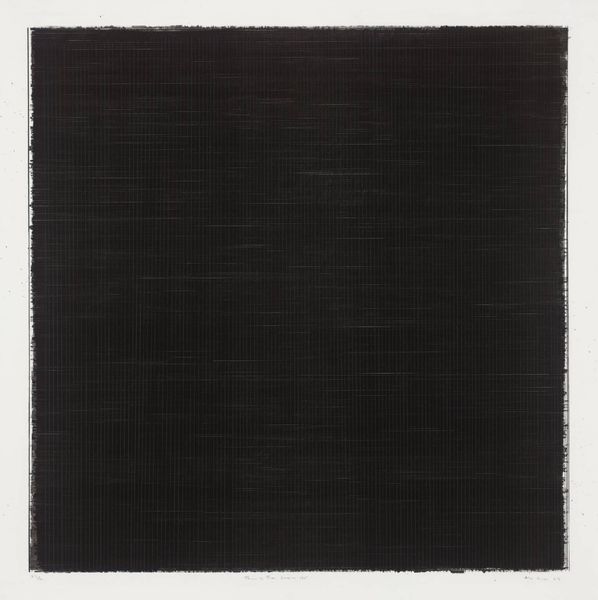
#
op-art
#
op art
#
abstract
#
geometric pattern
#
geometric
#
geometric-abstraction
#
line
Copyright: Modern Artists: Artvee
Editor: We’re looking at "Bora – A" by Victor Vasarely, created in 1968. It’s a print featuring stark black geometric shapes against a white background. The vertical lines appear to pulse and almost vibrate. What strikes you most about this piece? Curator: I see a sophisticated game with perception, a visual puzzle rooted in the cultural memory of pattern and repetition. Think of ancient textiles or even early computer punch cards—this interplay of black and white, presence and absence, triggers something primal. What is revealed and concealed through pattern? What lies hidden behind this facade of geometric precision? Editor: Hidden? I mainly saw the clean, modern design and wasn't considering something obscured. Curator: Consider how Vasarely plays with depth. Do the shapes advance, or recede? This constant visual push and pull could symbolize a deeper emotional tension. The bora wind itself – a powerful force of nature -- perhaps mirrored in a personal or social struggle. The pattern isn’t simply decorative, it acts as a metaphor. What effect do the slight irregularities and imperfections in the black shapes create for you? Editor: Now that you mention it, they introduce a human element into the rigid geometry. It’s almost as if the wind is subtly disrupting the perfect lines. I hadn't considered that natural elements can blend even within Op Art. Curator: Exactly. It's the disruption of pattern that invites our eye – and our mind -- to investigate, decipher, and ultimately, connect with the artwork on a symbolic level. Editor: This connection of pattern with nature is certainly an exciting perspective that changed my way of thinking.
Comments
No comments
Be the first to comment and join the conversation on the ultimate creative platform.
